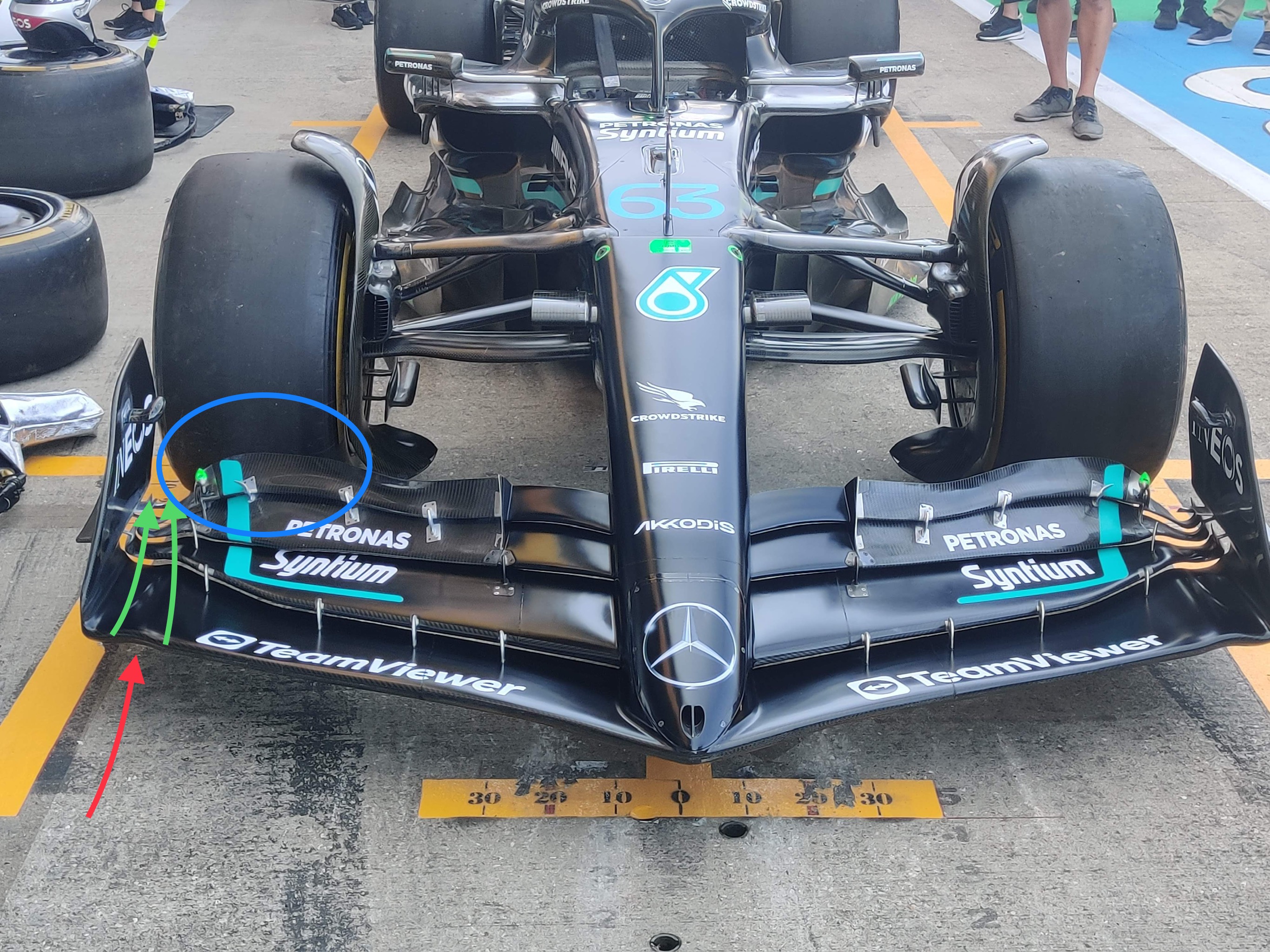Prior to Silverstone, Mercedes was very confident that its ‘big’ upgrade would close the gap to Red Bull.
However, laptime-wise it was instead leapfrogged by McLaren, which had both of its cars running on a very similar specification to the package that was introduced in Austria for Lando Norris.
So what’s not working for Mercedes? The big development for Silverstone building on the major upgrade at the Monaco Grand Prix was only a front wing. In my humble opinion, that’s where the problem starts.
The front wing sets up the airflow structure for the rest of the car and if ‘the rest of the car’ is not what it should be then you are simply optimising that flow structure around a body surface that isn’t producing the downforce or the consistency of aerodynamic load that it potentially could.
It’s also very easy to exaggerate your problems.

The red arrow shows how Mercedes has opened a small tunnel in the underside of the wing to increase the overall flow (green arrows) that connects up to the tyre squirt that goes around the outside of the front tyre.
This small tunnel can also reduce roll sensitivity in fast corners as the wing tip gets closer to the ground.

Mercedes has also reduced the camber on the front endplate outer turning vane (yellow arrows). This is a small change but it will pull slightly more airflow from under the wing into that tyre squirt flow than before (green arrows).
The area inside of the blue ellipse (first picture) is a little strange. The harder you work the area ahead of the front tyre, the more potential problems you have when the driver applies steering lock.
The thing about steering lock is that it varies around the lap, from high-speed corners that require very little steering lock to low-speed corners requiring high steering lock angles. It is one of the only tools the aerodynamicists have to help with altering the transient aerodynamic balance of the car. On top of that, the driver also has it as one of his tools in the car.
If they have some understeer and by applying more steering lock it diminishes that, they can play with the balance. If they have understeer and the car doesn’t respond to increased steering, then in effect they are just a passenger in a car and that will dictate the laptime.



